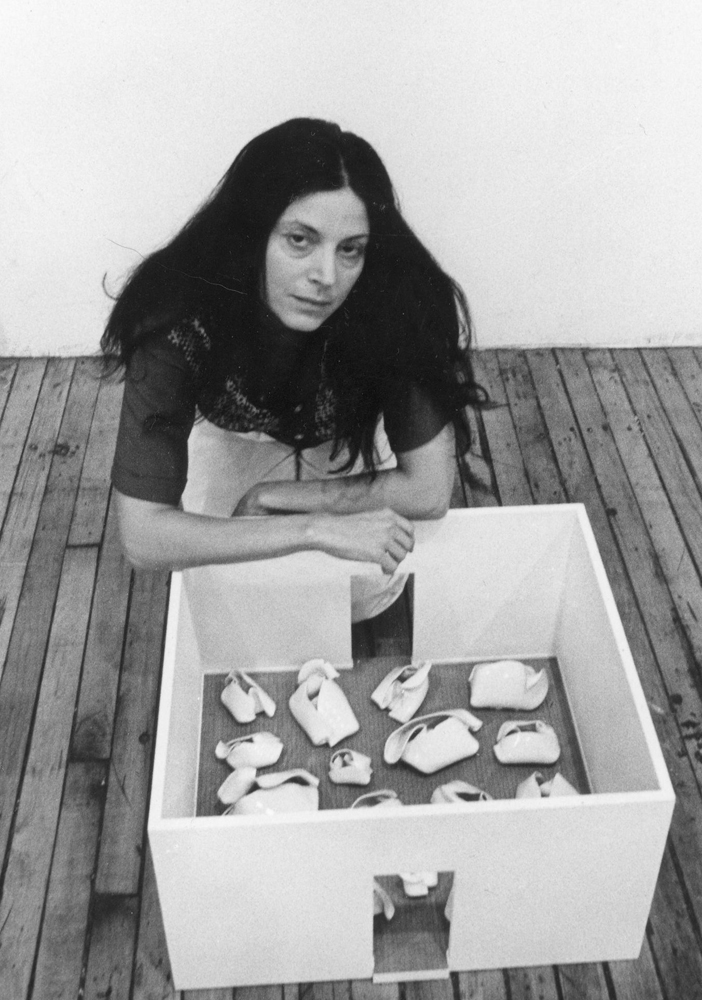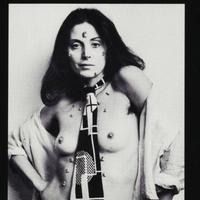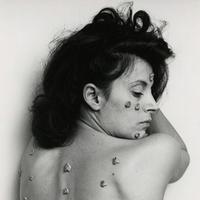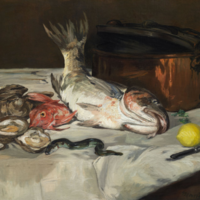More about Hannah Wilke
- All
- Info
- Shop
Works by Hannah Wilke

Sr. Contributor
Hannah Wilke was an artist in the 1970s who sparked controversy over her use of her naked body.
Wilke, born Arlene Hannah Butter, was a conceptual artist who worked in many mediums, including sculpture, assemblage, photography, performance and installation. She rose to prominence in the 1960s for her “vulval” terracotta sculptures and is considered the first feminist artist to incorporate vaginal imagery in her work. Wilke has depicted the vagina in everything from clay, to chewing gum, and even lint, as a nod to the historical lack of access women had to traditional art supplies.
In her most famous work, the 1974 series of performative self-portraits entitled SOS: Starification Object Series, she posed topless, satirizing the glamour models in women’s magazines using a range of props including sunglasses, cowboy hats, toy guns, rollers, a silk turban and a plastic toy. She stuck pieces of gum to her body to recall African ritual scarification, a rite of passage she called “starification” - the process a woman must go through to become a star. In public performances of this work, she would give audience members a stick of gum as they entered the gallery and invite them to stick the chewed gum on her body. In an article in ArtNews, she described her choice of gum saying, “I chose gum because it’s the perfect metaphor for the American woman – chew her up, get what you want out of her, throw her out and pop in a new piece.”
Wilke’s use of the female genitalia was not just restricted to imagery, as she also used puns to subvert phallocentric stereotypes. Venus Envy, a series of Polaroid images, is a play on "penis envy," the theory by Sigmund Freud that preschool-aged girls experience distress when they realize they don’t have a penis, and go on to carry that distress with them through adulthood. She nicknamed herself the Sugargiver as a nod to Marcel Duchamp’s self-designation as the Marchand de Sel, or "Salt Giver," an anagram of his name.
In her 1978 performance video Intercourse with…, she presents a series of her phone messages in a one-sided narration of her life. She speaks about the dynamics of racism: “Starification-scarification /Jew, black, Christian, Moslem ... Labeling people instead of listening to them.” On her surname she says, “As an American girl born with the name Butter in 1940, I was often confused when I heard what it was like to be used, to be spread, to feel soft, to melt in your mouth.” Later on in the piece she says, “‘Marks-ism’ and art. Fascistic feelings, internal wounds, made from external situations. Sticks and stones break our bones, but names more often hurt us.”
Wilke's use of her own image garnered criticism from feminists who were dissatisfied by the emphasis on her body. She used her body as a canvas as a way to discuss beauty and femininity, but as an attractive, straight, white female, critics questioned her success in subverting patriarchal ideals and wondered if using her body as an artistic tool upheld societal norms instead. Many in the feminist movement of the 1970s dismissed the glamorous display of her nude body as narcissism and her use of the vulva as essentialist. Art critic Lucy Lippard accused Wilke of making “politically ambiguous manifestations," and confusing her role as a conventionally attractive woman with that of an artist. Wilke responded to these criticisms of her work with Marxism and Art. In the poster, she points out the hypocrisy of feminism which prescribes how a woman should look or behave. She cautioned against dogmatism, saying “Beware of Fascist Feminism. There is an ethics as well as a warning in esthetic ambiguity.”
Wilke was diagnosed with lymphoma in 1992 and documented her chemotherapy in her final work Intra-Venus, which was published posthumously. The photographs, taken by her husband Donald Goddard, whom she married shortly before her death, recorded her physical and mental transformation as she died from cancer. Naked and vulnerable in her illness, as opposed to her earlier performative self-portraits, Wilke subverts the patriarchal ideal of the female body as an attractive vessel for pleasure. The connecting idea behind all of her work, from her performative self-portraits to her the documentation of her final days, is that of a female subject deeply immersed in cultural and self reflection.
Sources
- Hannah Wilke. “Biography.” http://www.hannahwilke.com/index.html.
- Hannah Wilke. “Excerpts.” http://www.hannahwilke.com/index.html.
- Manchester, Elizabeth. “Marxism and Art: Beware of Facist Feminism.” Tate. September 2008. https://www.tate.org.uk/art/artworks/wilke-marxism-and-art-beware-of-fa….
- Williams, Hannah. “Hannah Wilke’s Naked Crusade to Subvert the Patriarchy.” Artsy. Jan 1, 2019. https://www.artsy.net/article/artsy-editorial-hannah-wilkes-naked-crusa….
- “Intra-Venus.” Ronald Feldman Gallery. https://feldmangallery.com/exhibition/164-intra-venus-wilke-1-8-2-19-19….
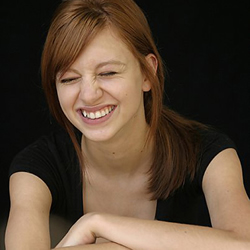
Sr. Editor
A Jewish woman grappling with sexism, much of Wilke's work was about gender. She made terra cotta vulvas and little vagina-shaped warts of bubble gum that she stuck to her body.
She was a beautiful woman by conventional standards, and was often criticized for using her own naked body in her art. However, she always maintained that her work was feminist because she was in control of the image. Those critics were probably just jealous of how hot she was.
As she deteriorated from lymphoma in her early 50s, she continued to photograph herself nude, now bald and sickly from the disease, chemotherapy and bone marrow transplants. This shut up the naysayers who had previously criticized her. She died from the disease in 1993.
Featured Content
Here is what Wikipedia says about Hannah Wilke
Hannah Wilke (born Arlene Hannah Butter; (March 7, 1940 – January 28, 1993) was an American painter, sculptor, photographer, video artist and performance artist. Wilke's work is known for exploring issues of feminism, sexuality and femininity.
Check out the full Wikipedia article about Hannah Wilke

